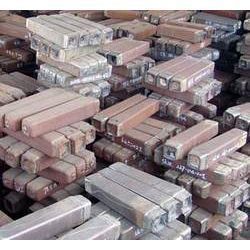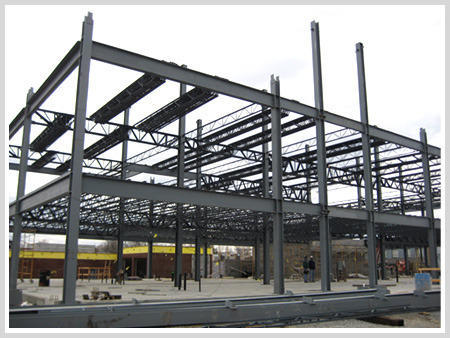
Steel is a dynamic, versatile and eco-friendly product with diverse use and applications. The liquid steel is solidified in cast iron moulds, which are placed on bottom pouring plate. The metal enters into the mould from bottom and rises up. In order to have ease in separating ingots from moulds, the moulds are tapered from top. Thus the ingots are also tapered from top. On the other hand, billets have same cross sectional area throughout its length. Billets are produced from Continuous casting Machine – CCM.
The following are the steps involved in the operation of a furnace
Specifications:- Available in all sizes & sections.
We are a leading manufacturer and exporter of heavy Cast Iron Castings, Ferro Alloys, Spares & Machinery and Raw Materials for Steel Mills. Our products

Sponge iron is a metallic product produced through direct reduction of iron ore in the solid state. It is a substitute for scrap and is mainly used in making steel through the secondary route. The process of sponge iron making aims to remove the oxygen from iron ore. The quality of sponge iron is primarily ascertained by the percentage of metallization (removal of oxygen), which is the ratio of metallic iron to the total iron present in the product.
Sponge iron manufacture is highly sensitive to raw material characteristics. Therefore, it is essential to examine the chemical and physical characteristics of raw materials, both individually and in combination. The basic raw materials for the production of sponge iron are iron ore, non-coking coal and dolomite. Sizing of the Raw materials also play vital role in sponge iron manufacturing process. The required size of Iron ore, MPS (Mean particle size) , its physical properties like T.I., A.I. & chemical properties like Fe (T), LOI, gangue content In Sponge Iron Process , two types of coal are being used such as feed coal and injection coal.
Properties of Sponge Iron:-
Specifications:-
Fe 'M': 80% min
MZ.: 88% min
Phos.: 0.05% max
Sulphur : 0.05% max
Carbon: 0.10 min
Size: 5 mm to 20 mm

One of the most important materials needed for high quality construction is steel, which is consumed in form of bars and the best raw material to produce high quality steel bars is MS Billets. At Arihant Sales Network, we produce ideal billets that result in top quality steel bars.
Billet, being a semi-finished product, is used for feedstock to rolling mills for production of long products like wire rods, bars/rods and structural. Steel Billet is also used extensively in forge shops and machine shops for production of engineering goods and also as feedstock for seamless tubes.
Excellent Surface Finish: The Billets produced by ARIHANT are free from any surface crack or lamination. Magnetic particle test in order to identify any crack on the surface is done on a regular basis as per its Quality Management Plan. Dimensional Tolerance: Billets at ARIHANT are produced strictly in accordance to IS 2830 for dimensional tolerance.
No Internal Defects: The Billets produced are free from any internal defects. Defects such as piping blow-holes and pinholes are identified and segregated by Sulphur Print Test.

Structural steel is a category of steel construction material that is produced with a particular cross section or shape, and some specified values of strength and chemical composition. Structural steel composition, strength, size, shape, strength, and storage are controlled in most advanced countries. The word structural steel includes a broad variety of low carbon and manganese steels that are used in great numbers for civil and marine engineering applications. Numerous structural steels also include minor quantities of significant additions of other elements like Nb, V, Ti and Al. These are called High Strength Low Alloy or micro-alloyed steels. Structural steels are manufactured in section and plate shapes and are normally used in bridges, buildings, ships, and pipelines.
Properties:- Steel construction has so many advantages: the strength to weight ratio is excellent, metals join easily, efficient shapes are available, etc. With those advantages, though, come some challenges that are best solved by a good understanding of how the metals actually perform in a structure.
Specifications:- M. S. Channels, Angles & Beams available in all sizes & sections.